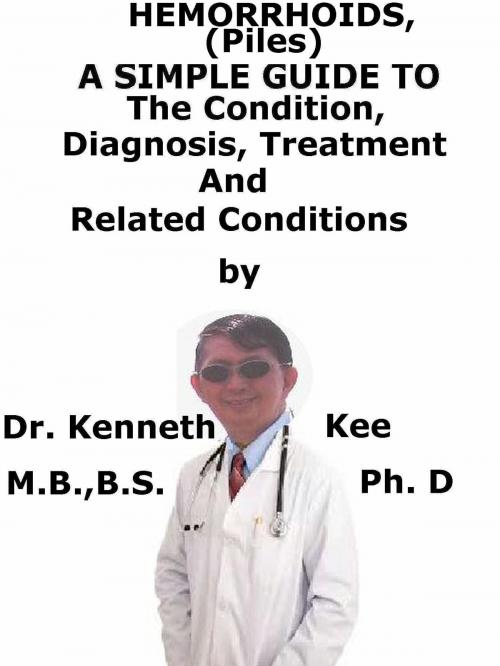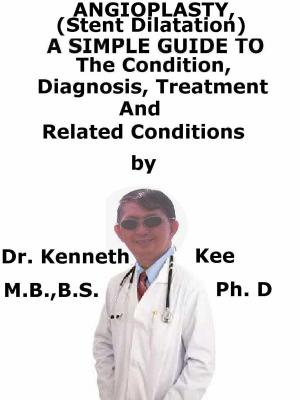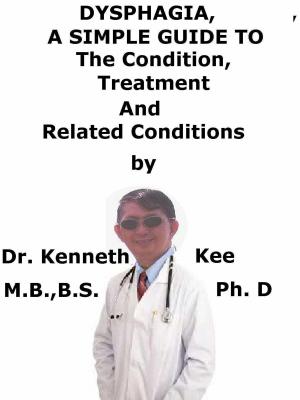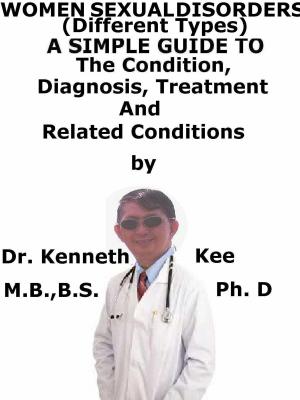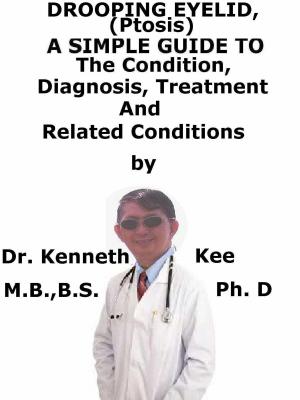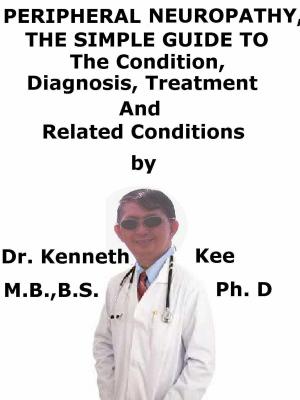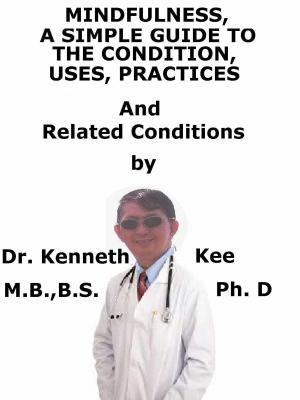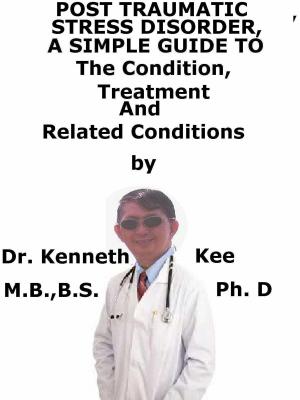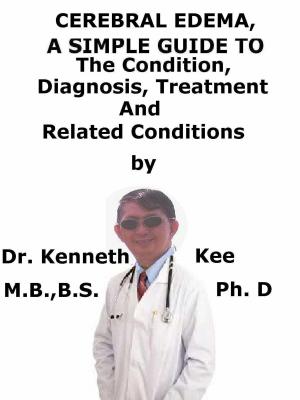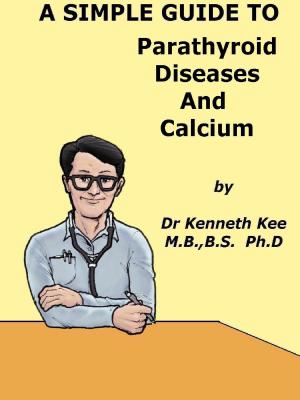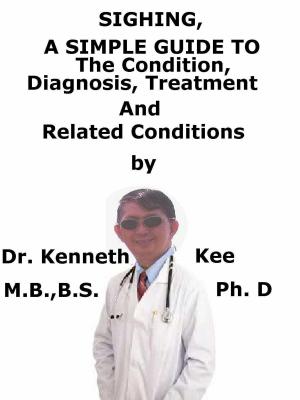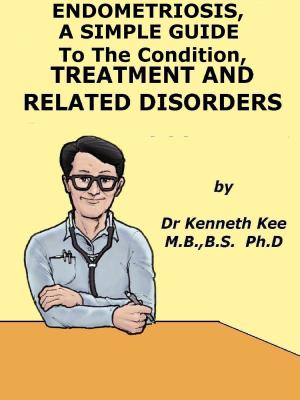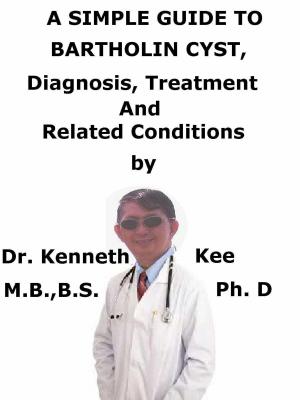Hemorrhoids (Piles), A Simple Guide To The Condition, Diagnosis, Treatment And Related Conditions
Nonfiction, Health & Well Being, Medical, Surgery, Colon & Rectal, Health, Ailments & Diseases, Abdominal| Author: | Kenneth Kee | ISBN: | 9781370849673 |
| Publisher: | Kenneth Kee | Publication: | January 1, 2018 |
| Imprint: | Smashwords Edition | Language: | English |
| Author: | Kenneth Kee |
| ISBN: | 9781370849673 |
| Publisher: | Kenneth Kee |
| Publication: | January 1, 2018 |
| Imprint: | Smashwords Edition |
| Language: | English |
Just 1 week ago my sister in law consulted a doctor about a protrusion in the anus and bleeding in the feces when she passed motion for a few months,
She was told that she had a rectal prolapse and surgery to remove the rectal prolapse.
She decided to consult me about her medical problem.
I examined her and found that there is a small protrusion from the anus which looked more like a prolapsed hemorrhoid rather than a rectal prolapse.
There were 3 small protrusions from the anus rather than a whole mucosal lining of the rectum that show concentric rings of mucosa protruding through the anus.
There was some blood on the protrusions that are typical of bleeding swollen blood vessels that are typically hemorrhoids or piles.
Hemorrhoids are swollen blood vessels that are present usually at the three o’clock, seven o’clock and eleven o’clock of the anal openings.
I reassured her because hemorrhoids are easier to treat than rectal prolapse.
I applied local anesthesia and pushed back her protrusion.
After this I inserted a suppository that will help to shrink the hemorrhoids.
She was told to avoid straining at her bowel movements and avoid constipation.
In all cases of bowel movement the squatting position to pass motions is the best where passing feces is concerned.
Regular bowel habits in the morning or at fixed times of the day will also help.
Avoid sitting on hot seats or areas like spas.
Drink more water and do more walking especially after food to help the digestion.
Take more fruits, vegetables and fibers that will help to improve the bowel movement,
Most importantly if there is bleeding a colonoscopy examination is always helpful to exclude any tumors, polyps.
Any hemorrhoids or polyps found can be removed at the same time.
New methods of treatments using Doppler guided hemorrhoid artery ligation and hemorrhoid lift are least painful.
The Rafaelo procedure uses needle to emit radio-frequency energy to shrink piles
Hemorrhoids or piles are medical disorders that are distended veins inside the anus which are swollen and inflamed.
Hemorrhoids are either inside the anus (internal) or the skin around the anus (external).
Hemorrhoids are swollen blood vessels in the anus or lower portion of the rectum.
They have many arteries and veins.
Hemorrhoids may be inside or outside the body.
There are 2 types of hemorrhoids:
- Internal hemorrhoids occur just inside the anus, at the beginning of the rectum.
When they are bigger they may fall outside (prolapse).
The most common problem with internal hemorrhoids is bleeding during bowel movements. - External hemorrhoids occur outside the anus.
They can result in difficulty cleaning the region after a bowel motion.
If there is a blood clot forming in an external hemorrhoid, it can be very painful (thrombosed external hemorrhoid).
Hemorrhoids are very common (75%).
They result from increased pressure on the anus.
This pressure may happen during pregnancy, childbirth, and due to constipation.
The pressure causes the normal anal pads to form swellings.
These blood vessel swellings can bleed, frequently during bowel movements.
Hemorrhoids may be caused by:
- Straining to pass the stool out of anus
- Constipation
- Sitting for long periods of time, especially on the toilet
- Pregnancy,
- Aging,
- Chronic constipation or diarrhea
The most frequent symptom of internal hemorrhoids is
- Painless Bleeding from the anus.
Bright red blood may be observed covering the stool, on toilet paper, or dripping from the anus into the toilet bowl. - There may be pain too particularly if the stool is hard.
Diagnosis of hemorrhoids:
Anal exam
Colonoscopy
Treatment of hemorrhoids:
Suppository or cream
Tub baths
Removal of piles
TABLE OF CONTENT
Introduction
Chapter 1 Hemorrhoids
Chapter 2 Causes
Chapter 3 Symptoms
Chapter 4 Diagnosis
Chapter 5 Treatment
Chapter 6 Prognosis
Chapter 7 Rectal Prolapse
Chapter 8 Constipation
Epilogue
Just 1 week ago my sister in law consulted a doctor about a protrusion in the anus and bleeding in the feces when she passed motion for a few months,
She was told that she had a rectal prolapse and surgery to remove the rectal prolapse.
She decided to consult me about her medical problem.
I examined her and found that there is a small protrusion from the anus which looked more like a prolapsed hemorrhoid rather than a rectal prolapse.
There were 3 small protrusions from the anus rather than a whole mucosal lining of the rectum that show concentric rings of mucosa protruding through the anus.
There was some blood on the protrusions that are typical of bleeding swollen blood vessels that are typically hemorrhoids or piles.
Hemorrhoids are swollen blood vessels that are present usually at the three o’clock, seven o’clock and eleven o’clock of the anal openings.
I reassured her because hemorrhoids are easier to treat than rectal prolapse.
I applied local anesthesia and pushed back her protrusion.
After this I inserted a suppository that will help to shrink the hemorrhoids.
She was told to avoid straining at her bowel movements and avoid constipation.
In all cases of bowel movement the squatting position to pass motions is the best where passing feces is concerned.
Regular bowel habits in the morning or at fixed times of the day will also help.
Avoid sitting on hot seats or areas like spas.
Drink more water and do more walking especially after food to help the digestion.
Take more fruits, vegetables and fibers that will help to improve the bowel movement,
Most importantly if there is bleeding a colonoscopy examination is always helpful to exclude any tumors, polyps.
Any hemorrhoids or polyps found can be removed at the same time.
New methods of treatments using Doppler guided hemorrhoid artery ligation and hemorrhoid lift are least painful.
The Rafaelo procedure uses needle to emit radio-frequency energy to shrink piles
Hemorrhoids or piles are medical disorders that are distended veins inside the anus which are swollen and inflamed.
Hemorrhoids are either inside the anus (internal) or the skin around the anus (external).
Hemorrhoids are swollen blood vessels in the anus or lower portion of the rectum.
They have many arteries and veins.
Hemorrhoids may be inside or outside the body.
There are 2 types of hemorrhoids:
- Internal hemorrhoids occur just inside the anus, at the beginning of the rectum.
When they are bigger they may fall outside (prolapse).
The most common problem with internal hemorrhoids is bleeding during bowel movements. - External hemorrhoids occur outside the anus.
They can result in difficulty cleaning the region after a bowel motion.
If there is a blood clot forming in an external hemorrhoid, it can be very painful (thrombosed external hemorrhoid).
Hemorrhoids are very common (75%).
They result from increased pressure on the anus.
This pressure may happen during pregnancy, childbirth, and due to constipation.
The pressure causes the normal anal pads to form swellings.
These blood vessel swellings can bleed, frequently during bowel movements.
Hemorrhoids may be caused by:
- Straining to pass the stool out of anus
- Constipation
- Sitting for long periods of time, especially on the toilet
- Pregnancy,
- Aging,
- Chronic constipation or diarrhea
The most frequent symptom of internal hemorrhoids is
- Painless Bleeding from the anus.
Bright red blood may be observed covering the stool, on toilet paper, or dripping from the anus into the toilet bowl. - There may be pain too particularly if the stool is hard.
Diagnosis of hemorrhoids:
Anal exam
Colonoscopy
Treatment of hemorrhoids:
Suppository or cream
Tub baths
Removal of piles
TABLE OF CONTENT
Introduction
Chapter 1 Hemorrhoids
Chapter 2 Causes
Chapter 3 Symptoms
Chapter 4 Diagnosis
Chapter 5 Treatment
Chapter 6 Prognosis
Chapter 7 Rectal Prolapse
Chapter 8 Constipation
Epilogue
